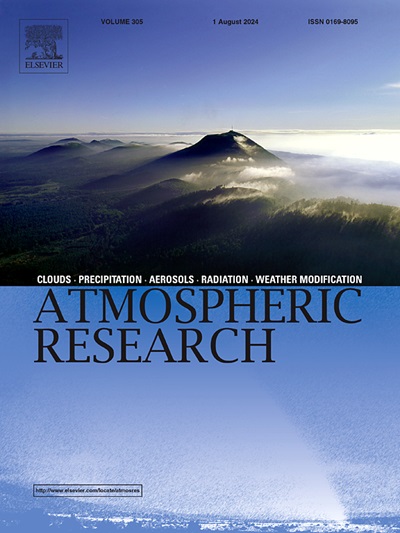TEDR: A spatiotemporal attention radar extrapolation network constrained by optical flow and distribution correction
IF 4.5
2区 地球科学
Q1 METEOROLOGY & ATMOSPHERIC SCIENCES
引用次数: 0
Abstract
In recent years, deep learning has been widely applied to meteorological radar extrapolation due to the shortcomings of traditional optical flow methods in predicting the genesis and dissipation of radar echoes. However, it still faces challenges in addressing issues of clarity and overall intensity attenuation caused by uncertainty. This study implemented a dual-path spatiotemporal attention network that integrates optical flow techniques by employing intra-frame static attention and inter-frame dynamic attention, which could simulate motion fields and the overall intensity distribution of radar echoes separately. Our approach effectively resolve the issues of systematic intensity attenuation and clarity degradation introduced by deep learning methods. Through the comparisons of key metrics such as MSE, SSIM, CSI20, CSI30, and CSI40, the results demonstrated significant improvements over traditional approaches, particularly in CSI30 and CSI40, where the metrics improved by more than 35 %.
TEDR:受光流和分布校正制约的时空注意力雷达外推网络
近年来,由于传统光流方法在预测雷达回波成因和消散方面存在缺陷,深度学习被广泛应用于气象雷达外推。然而,它在解决不确定性导致的清晰度和整体强度衰减问题上仍面临挑战。本研究利用帧内静态关注和帧间动态关注,实现了一种集成光流技术的双路径时空关注网络,可分别模拟运动场和雷达回波的整体强度分布。我们的方法有效解决了深度学习方法带来的系统强度衰减和清晰度下降问题。通过对 MSE、SSIM、CSI20、CSI30 和 CSI40 等关键指标的比较,结果表明与传统方法相比,我们的方法有了显著改进,尤其是在 CSI30 和 CSI40 方面,指标提高了 35% 以上。
本文章由计算机程序翻译,如有差异,请以英文原文为准。
求助全文
约1分钟内获得全文
求助全文
来源期刊

Atmospheric Research
地学-气象与大气科学
CiteScore
9.40
自引率
10.90%
发文量
460
审稿时长
47 days
期刊介绍:
The journal publishes scientific papers (research papers, review articles, letters and notes) dealing with the part of the atmosphere where meteorological events occur. Attention is given to all processes extending from the earth surface to the tropopause, but special emphasis continues to be devoted to the physics of clouds, mesoscale meteorology and air pollution, i.e. atmospheric aerosols; microphysical processes; cloud dynamics and thermodynamics; numerical simulation, climatology, climate change and weather modification.
 求助内容:
求助内容: 应助结果提醒方式:
应助结果提醒方式:


